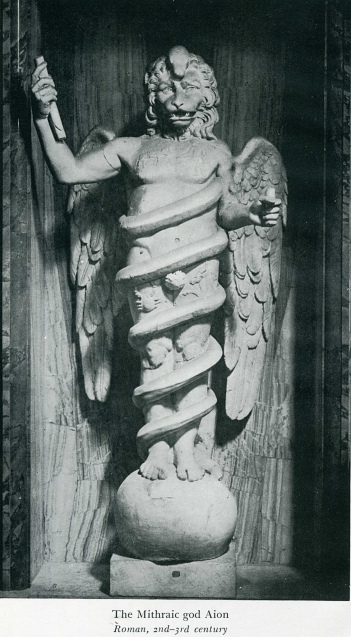|
Gnosticism Gnosticism
is associated with a wide variety of sects that flourished during the
late Roman Empire, in a wide arc that extended from Rome, through Egypt
and the Middle East, to Persia. Little is known about most of these
sects, and they are remembered through the critiques of Church
heresiologists, and through surviving documents. Many sects were
Christian offshoots, some were Jewish, and others are difficult to
categorise. Gnosticism
is associated with a wide variety of sects that flourished during the
late Roman Empire, in a wide arc that extended from Rome, through Egypt
and the Middle East, to Persia. Little is known about most of these
sects, and they are remembered through the critiques of Church
heresiologists, and through surviving documents. Many sects were
Christian offshoots, some were Jewish, and others are difficult to
categorise.
It is difficult to summarise the wide variety of gnostic beliefs concisely, but there are some common factors:
- Exile. The human soul is in exile from its true home, often characterised as a realm of light.
- Captivity. The human soul is not only in exile, it is held captive by evil powers.
- Ignorance.
The human soul becomes attached to material existence and is ignorant
of its true situation (exile, captivity, bondage, alienation, evil).
- Dualism. The
cosmos is divided between good and evil powers, also characterised as
light and darkness, or truth and lie. In radical dualism there is a
fundamental split, and good and evil have equal ontological status. In
mitigated dualism the dominance of evil is seen as temporary and
ultimately subordinate to good.
- Alienation.
The material world is viewed as the creation of evil beings. Sex and
procreation may be viewed as perpetuating bondage, and celibacy may be
encouraged. Secular and spiritual powers may also be seen as agents of
evil, leading to ...
- Antinomianism.
The civil and religious structure of society may be viewed as evil, and
there may be ritualised acts of defiance, often violation of sexual or
dietary taboos.
- Catastrophe. The
dominance of evil is the result of a cosmological catastrophe within
the divine. This is often associated with a female power (divine
wisdom, Sophia) acting independently of her consort.
- Redemption.
It is possible for the human soul to become aware of its true situation
and seek redemption and liberation, a return to the world of light.
This may be a result of an ...
- Emissary. The
world of light may send emissaries to the world of captivity to awaken
the souls of the chosen. Many gnostic sects viewed Jesus as an emissary
figure. The emissary might well communicate ...
- Secret Knowledge.
The secret knowledge usually consisted of names of power, talismanic
diagrams, and ritual formulae for binding the powers of evil, so
enabling the soul to escape from their thrall and rise to the world of
light.
Gnosticism appears to be closely associated with social alienation, and
its rise in late antiquity coincided with the existence of large urban
centres, breakdown of kin groups, economic deprivation, the dominance
of large empires over ethnic groups, and the imposition of state
religions.
Kabbalah contains many elements of structural gnosticism - that is,
while there is no explicit connection with the gnosticism of late
antiquity, most of the key ideas described above can be found to some
degree. The Kabbalah of R. Isaac Luria contains many gnostic elements, and these tendencies were greatly exaggerated by the followers of the false messiah Sabbatai Zevi and his court kabbalist and apologist Nathan of Gaza. The most extreme development of these ideas can be found in the beliefs and practices of the followers of Jacob Frank. Even highly respected and venerated Hassidic works such as the Tanya have distinctively gnostic outlook.
See also: Gnosticism (Wikipedia)
Return to Historical Background
|
|

 Gnosticism
is associated with a wide variety of sects that flourished during the
late Roman Empire, in a wide arc that extended from Rome, through Egypt
and the Middle East, to Persia. Little is known about most of these
sects, and they are remembered through the critiques of Church
heresiologists, and through surviving documents. Many sects were
Christian offshoots, some were Jewish, and others are difficult to
categorise.
Gnosticism
is associated with a wide variety of sects that flourished during the
late Roman Empire, in a wide arc that extended from Rome, through Egypt
and the Middle East, to Persia. Little is known about most of these
sects, and they are remembered through the critiques of Church
heresiologists, and through surviving documents. Many sects were
Christian offshoots, some were Jewish, and others are difficult to
categorise.